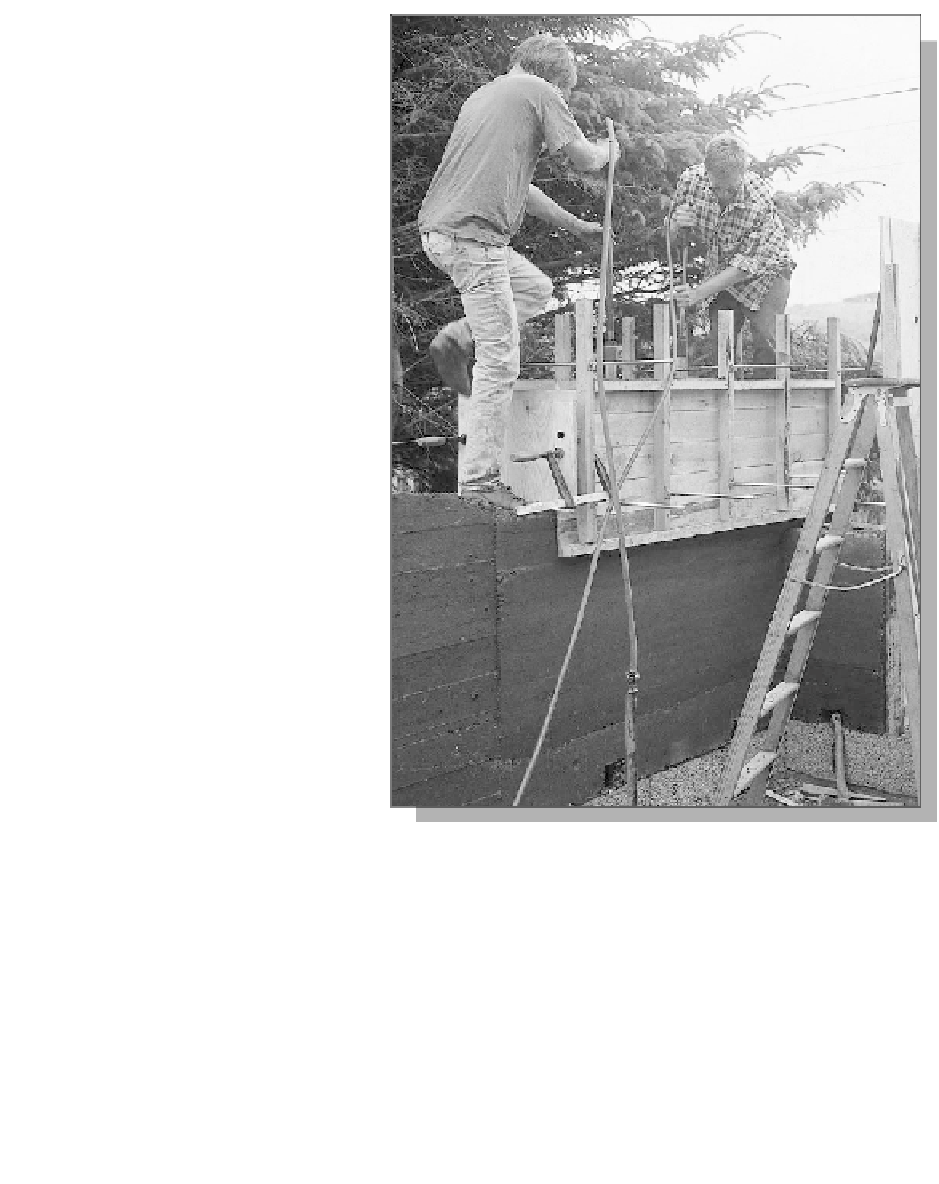Civil Engineering Reference
In-Depth Information
handle is heavy hardwood and the
rammer is made of iron. The
weight of a rammer should be
around 6-7 kg.
Ramming by machine is much
more effective. This can be done
using a compressed air hammer with
a square steel head of 12
12 cm.
The compressor's power should be
around 5 hp per hammer. The job
must be done by an operator who
can steer the machine; it is heavy
work. A robot-rammer which can fol-
low the line of the shuttering is being
developed in Germany.
Ramming is best carried out by a
working team of two or three peo-
ple. The wall shuttering is mounted
on the foundation walls as in Figure
13.22 with gable ends and separat-
ing boards.
When ramming by machine layers
of 13-14 cm can be built. This is
approximately two thirds of the vol-
ume of the original loose earth.
When ramming by hand a layer
thickness of not more than 8 cm is
advisable. Clearly the two methods
cannot be used together. It is impor-
tant to ram at the edge of the shut-
tering when machine ramming -
starting in the middle may cause
stones and lumps to be pushed out
to the edge and loosened. The ramming should make the earth as hard as rock - it
should 'sing out' - and a pick should not make any marks when the surface is hit.
When the first layer is ready, the next layer is begin, and so on until the shut-
tering is full. The rods are then pulled out and moved up the shuttering. With
each move it is necessary to check that the shuttering is vertical. The conical post
on the gable end of the shuttering acts as a 'locking key' to increase the stability
of the wall.
In the corners reinforcement of twigs or barbed wire are used, and after the
first layer, holes are cut for the floor beams, which will be placed directly on the
Figure 13.20: Ramming earth with a compressed air machine.
Source: Gaia Lista 1991

